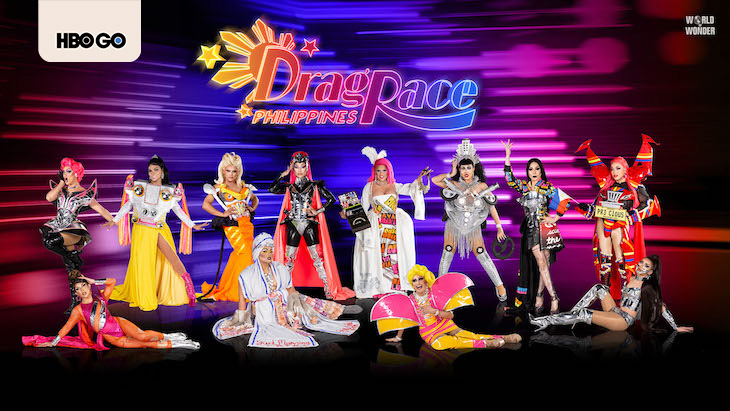With shows such as RuPaul’s Drag Race and its local adaptation Drag Race Philippines making the waves of mainstream media, drag culture is put front and center—and it is winning the hearts of many Filipinos.
Get a dose of herstory about drag culture and how it came to be.

Courtesy of HBO Go
Let’s discover how drag came to be, its origins in the Philippines, and what’s to come in the local scene.
A herstory lesson: the origins of drag
The term “drag” traces its roots back to the 16th and 17th centuries. Because women were not allowed to perform in theater, male cast members would take on female characters and dress up as women, with their dresses “dragging” the floor—thus coining the term.
The practice of precolonial Filipino men dressing up in women's clothing predated drag's debut in the Philippines. Gender-crossing was already the norm, with spiritual leaders like the babaylan being recognized as “somewhat-women.” Furthermore, the existence of drag goes further back the art form’s appearance in mainstream media.
Centuries later, performers such as Crispulo “Pulong” Luna and Walterina Markova made themselves known as gender-crossers during the American and Japanese occupations. But it wasn’t until the 1960s and 1970s that drag was brought into the limelight, with films such as Ang Tatay Kong Nanay hitting Philippine cinemas. In addition, The Paper Dolls, dubbed “Asia’s top female impersonators,” were regulars at the Cabaret Royale nightclub in Makati. The group was even invited to perform at Whitney Houston’s concert in Manila. Around this time, national gay pageants, like Miss Gay Philippines, were also gaining popularity.
In the 90s and 2000s, drag in the Philippines eventually took on a more comedic slant, with entertainers like Allan K doing drag on variety shows. This eventually became the commonplace (and one-sided) perception of Philippine drag culture.
What’s in a name: where did all those names come from?
Being a drag queen is more than just an impersonator or a jokester–it is an art form. Therefore, choosing one’s name is deemed as important as one’s brand.
Most popular drag queens typically use unique, funky names to match their respective personas. Here are some examples:
- Manila Luzon, a Filipino-American drag queen, and RuPaul’s Drag Race alum, named herself after our capital city and the nation’s largest island.
- “Eva Le Queen,” a Drag Race Philippines contestant and founder of Drag Playhouse PH, is a wordplay on “evil queen.”
- “Brigiding,” another Drag Race Philippines contender, is a portmanteau of the drag queen’s grandfather’s name (Brigido) and “bading.”
Other drag queens take their cues from pop culture. Precious Paula Nicole “borrowed” her drag name from a character that Drag Race Philippines host Paolo Ballesteros portrayed in another show. Viñas Deluxe, on the other hand, uses her last name–her birth name is Christian Viñas. And who could forget RuPaul, who uses his actual given name?
Unique Filipino flavor: where drag is today
Starting in the 2010s, drag shows in the Philippines began circulating in venues such as O Bar in Ortigas, Nectar Nightclub in BGC, and 20:20 in Makati. Many of these performers had corporate jobs in the day and transformed into drag queens at night. In 2017, the Escolta Drag Fair–the first of its kind–vies to raise awareness of our own drag culture.
When the pandemic broke out in 2020, local drag queens utilized online platforms for exposure and to keep their shows going. When government restrictions loosened over the course of 2021 and 2022, local drag went into full swing, with shows recommencing at their usual venues and even performing at noteworthy events such as the 2022 Pride March. Local drag communities also hold Drag Race Philippines viewing parties and drag brunches at the Butter Boy Bakehouse in Quezon City.
Not a moment but a movement
With our own cultural penchant for entertainment, is it any wonder that drag is starting to make waves in the hearts of Filipino audiences? Gone are the days of limiting drag purely for slapstick and comedic value–it is an art form, and it is here to slay.
If you haven’t started watching Drag Race Philippines yet, now’s the best time to start. The reality show is available to stream on HBO Go with your PLDT Home broadband. Subscribe today and experience the best in entertainment!